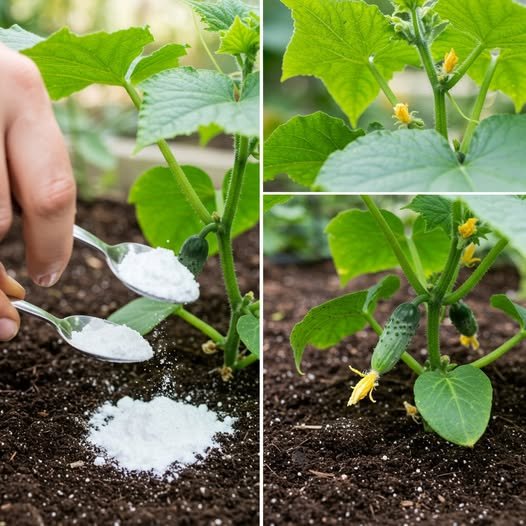Houseplants have become an essential part of interior decor, bringing life and vibrancy to our living spaces. However, not all homes have the luxury of abundant natural light. For those living in apartments or houses with limited sunlight, low-light houseplants are an ideal solution. These plants not only survive but thrive in dimly lit environments, making them perfect companions for any room in your home. In this article, we will explore 20 top houseplants that require minimal sunlight, ensuring you can enjoy greenery no matter your lighting conditions.
Understanding Light Requirements for Houseplants
Light is a crucial factor for plant growth, as it is necessary for photosynthesis. However, different plants have varying light requirements. Low-light houseplants have adapted to thrive in environments with limited natural light. They typically originate from forest floors or shaded areas where direct sunlight is scarce. Understanding these requirements helps in selecting the right plants for your space and ensuring they receive the care they need to flourish.
The Benefits of Low-Light Houseplants
Low-light houseplants offer numerous benefits beyond their ability to thrive in dim conditions. They improve air quality by filtering toxins, increase humidity, and provide a calming effect that enhances mental well-being. Additionally, these plants are generally low-maintenance, making them perfect for busy individuals or those new to plant care. Their resilience and adaptability make them a valuable addition to any home.
1. Spider Plant: The Resilient Survivor
Spider plants are known for their long, arching leaves and ability to produce ‘pups’ or baby plants. They are incredibly forgiving and can tolerate a range of conditions, including low light, needing just 2-4 hours of dim, filtered light daily (e.g., a north-facing window or a spot far from a window), though they thrive best with 4-6 hours of bright, indirect light to enhance variegation. Spider plants are also excellent at purifying the air, removing pollutants such as formaldehyde and xylene.
2. Snake Plant: The Indestructible Green
Also known as mother-in-law’s tongue, the snake plant is virtually indestructible. It can survive in very low light with just 2-3 hours of dim light daily, even tolerating artificial light alone, though 4-6 hours of bright, indirect light boosts its growth. It requires minimal watering, making it ideal for beginners. Its upright, sword-like leaves add a modern touch to any decor, and it is known for its ability to convert CO2 into oxygen at night.
3. Peperomia: The Compact Beauty
Peperomia plants are compact and come in a variety of leaf shapes and colors. They thrive in low light with about 3-4 hours of soft, filtered light daily (e.g., near an east-facing window with a sheer curtain), though 4-6 hours of medium indirect light keeps them lush. They’re perfect for small spaces or desktops. Peperomias are low-maintenance and require infrequent watering, making them a popular choice for busy plant enthusiasts.
4. Peace Lily: The Elegant Purifier
Peace lilies are known for their striking white flowers and lush green leaves. They thrive in low-light conditions with 2-4 hours of dim, filtered light daily, tolerating fluorescent lighting well, though 4-6 hours of bright, indirect light encourages more blooms. They are excellent at purifying the air by removing toxins like ammonia and benzene. Peace lilies prefer to be kept moist but not waterlogged, making them relatively easy to care for.
5. Red Prayer Plant: The Colorful Night Owl
The red prayer plant is named for its unique behavior of folding its leaves upward at night, resembling hands in prayer. It features vibrant red veins and thrives in low light with 3-5 hours of soft, diffused light daily (e.g., a shaded corner or north-facing window), while 4-6 hours of medium indirect light enhances its vibrancy. This plant prefers high humidity and consistent moisture, making it a beautiful and dynamic addition to any room.
6. ZZ Plant: The Low-Maintenance Marvel
The ZZ plant is renowned for its glossy, dark green leaves and ability to thrive in very low-light conditions with just 2-3 hours of dim light daily, tolerating artificial light well, though 4-6 hours of bright, indirect light speeds growth. It is drought-tolerant and requires very little attention, making it perfect for those who travel frequently or have a busy lifestyle. The ZZ plant is also known for its air-purifying qualities.
7. Cast Iron Plant: The Tough Traditionalist
True to its name, the cast iron plant is incredibly hardy and can withstand neglect, low light with 2-4 hours of dim, filtered light daily, and varying temperatures, though 4-6 hours of medium indirect light improves leaf color. Its broad, dark green leaves add a touch of elegance to any space. This plant is perfect for those who want a no-fuss, resilient houseplant.
8. Pothos: The Versatile Vine
Pothos plants are versatile and can thrive in a variety of lighting conditions, including low light with 3-4 hours of dim, filtered light daily, even tolerating artificial light, while 4-6 hours of bright, indirect light enhances variegation and growth. They are known for their trailing vines and heart-shaped leaves, which can be variegated with white or yellow. Pothos are easy to propagate and care for, making them a favorite among plant enthusiasts.
9. Chinese Evergreen: The Adaptable Aesthetic
Chinese evergreens are prized for their striking foliage, which comes in various shades of green, silver, and red. They thrive in low-light conditions with 2-4 hours of soft, diffused light daily (e.g., a north-facing window), though 4-6 hours of medium indirect light boosts color intensity. They are tolerant of varying humidity levels. These plants are easy to care for and can add a touch of color and texture to any room.
10. Philodendron: The Classic Climber
Philodendrons are classic houseplants known for their heart-shaped leaves and climbing nature. They can thrive in low light with 3-5 hours of dim, filtered light daily, while 4-6 hours of bright, indirect light promotes faster growth. They are easy to propagate. Philodendrons are low-maintenance and can adapt to a variety of indoor conditions, making them a staple in many homes.
11. Dracaena: The Stylish Statement
Dracaenas are popular for their striking, sword-like leaves and ability to thrive in low light with 3-5 hours of soft, filtered light daily, while 4-6 hours of bright, indirect light enhances leaf patterns. They come in various species, each with unique leaf patterns and colors. Dracaenas are low-maintenance and can add a stylish, architectural element to any space.
12. Dieffenbachia: The Tropical Touch
Dieffenbachia, also known as dumb cane, is known for its large, variegated leaves and tropical appearance. It thrives in low light with 3-4 hours of dim, diffused light daily, though 4-6 hours of bright, indirect light improves variegation. It prefers consistent moisture. This plant can add a lush, tropical feel to any room while being relatively easy to care for.
13. Boston Fern: The Lush Greenery
Boston ferns are known for their feathery, arching fronds and ability to thrive in low-light conditions with 3-5 hours of soft, filtered light daily (e.g., a north- or east-facing window), though 4-6 hours of medium indirect light keeps fronds lush. They prefer high humidity and consistent moisture, making them ideal for bathrooms or kitchens. Boston ferns are excellent air purifiers and can add a touch of lush greenery to any space.
14. Parlor Palm: The Indoor Oasis
The parlor palm is a classic indoor plant known for its elegant, feathery fronds. It thrives in low-light conditions with 2-4 hours of dim, filtered light daily, though 4-6 hours of bright, indirect light encourages growth. It requires minimal care, making it a popular choice for homes and offices. The parlor palm adds a touch of tropical elegance to any room.
15. Maidenhair Fern: The Delicate Delight
Maidenhair ferns are known for their delicate, fan-shaped fronds and preference for low-light environments with 3-5 hours of soft, diffused light daily, while 4-6 hours of medium indirect light supports their delicate growth. They require high humidity and consistent moisture, making them ideal for bathrooms or terrariums. Despite their delicate appearance, maidenhair ferns can be a stunning addition to any space.
16. Rex Begonia: The Vibrant VisionRex begonias are prized for their vibrant, colorful leaves and ability to thrive in low light with 3-5 hours of filtered light daily, though 4-6 hours of bright, indirect light enhances color. They come in a variety of patterns and colors, adding a pop of color to any room. Rex begonias prefer high humidity and consistent moisture, making them a beautiful and dynamic choice for plant enthusiasts.
17. Calathea: The Patterned Performer
Calatheas are known for their striking, patterned leaves and ability to thrive in low-light conditions with 3-5 hours of soft, diffused light daily, while 4-6 hours of medium indirect light keeps leaves vibrant. They prefer high humidity and consistent moisture, making them ideal for bathrooms or kitchens. Calatheas are a favorite among plant enthusiasts for their unique and eye-catching foliage.
18. Lucky Bamboo: The Zen Enhancer
Lucky bamboo is known for its unique, bamboo-like appearance and ability to thrive in low light with 2-4 hours of dim, filtered light daily, often under artificial light, though 4-6 hours of bright, indirect light promotes growth. It is often grown in water, making it low-maintenance and easy to care for. Lucky bamboo is believed to bring good luck and positive energy, making it a popular choice for homes and offices.
19. Heartleaf Philodendron: The Heartfelt Favorite
The heartleaf philodendron is a classic houseplant known for its heart-shaped leaves and trailing vines. It thrives in low light with 3-5 hours of dim, filtered light daily, while 4-6 hours of bright, indirect light speeds growth. It is easy to care for, making it a favorite among plant enthusiasts. This plant is perfect for hanging baskets or as a trailing accent on shelves.
20. Bird’s Nest Fern: The Nestled Nurturer
Bird’s nest ferns are known for their unique, rosette-shaped fronds and ability to thrive in low-light conditions with 3-5 hours of soft, diffused light daily, though 4-6 hours of medium indirect light enhances lushness. They prefer high humidity and consistent moisture, making them ideal for bathrooms or kitchens. Bird’s nest ferns add a touch of lush greenery and texture to any space.
Conclusion: Choosing the Right Low-Light Houseplant for Your Space
Selecting the right low-light houseplant for your space depends on your personal preferences and the specific conditions of your home. Consider factors such as humidity, temperature, and available space when choosing a plant. With the right care and attention, these resilient houseplants can thrive and bring life to even the dimmest corners of your home. Whether you’re a seasoned plant enthusiast or a beginner, there’s a low-light houseplant perfect for you.



